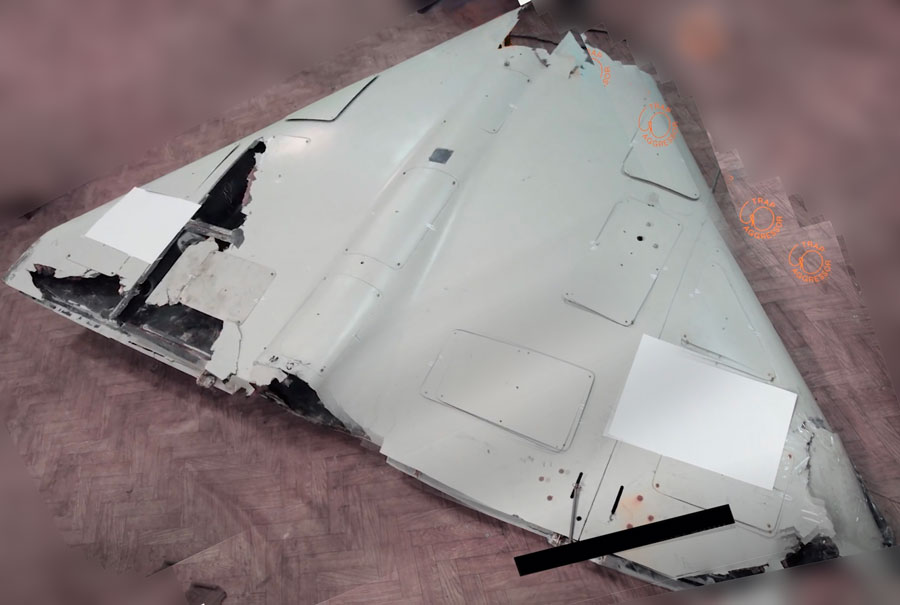Ukraine’s Defense Intelligence Directorate (HUR) says Russia is already using Iran’s new Shahed-107 attack drone against frontline regions of Ukraine and has released a detailed breakdown of its design, components, and guidance systems in a statement on its official Facebook page and on the War&Sanctions portal.
For HUR, the Shahed-107 is more than just another kamikaze UAV: its emergence in Ukraine, months after the Islamic Revolutionary Guard Corps first presented it in June 2024 amid heightened Iran–Israel tensions, is fresh evidence of deepening Moscow–Tehran military cooperation and of Iranian weapons being combat-tested on Ukrainian soil.
Technical characteristics of Shahed-107

According to HUR’s examination, Shahed-107 is a high-wing unmanned aircraft with a 3-meter wingspan and an X-shaped tail that stabilizes the drone in flight. Its fuselage is made of carbon fiber, while the main structural elements are aluminum, balancing low weight with sufficient strength.
The studied example carried a 15 kg cumulative fragmentation high-explosive warhead, comparable in characteristics to warheads used in other Iranian “Shahed” models. It is powered by a Chinese DLE 111 two-stroke gasoline engine, a type of small engine Ukrainian intelligence has observed in Russian drones such as “Herbera,” “BM-35,” “Parodiya,” and “Delta.”
With a 28-liter fuel tank, Ukrainian intelligence estimates the Shahed-107’s effective range at about 300 km, allowing strikes on most frontline areas from rear launch sites.
Navigation uses an inertial system with an interference-protection block and four-element anti-jamming antenna, while a flight controller (FCU) directs the elevon and engine servos along a preset route.
HUR notes that the drone’s electronic component base follows a familiar pattern for Iranian and Russian designs: microchips and modules sourced from the US, Switzerland, China, Japan, Taiwan, the Netherlands, and Ireland.
Trending Now
Tehran–Moscow partnership and global risks
Ukrainian intelligence stresses that the appearance of Shahed-107 in Russia, and its use against Ukraine, is yet another signal of expanding military-technical cooperation between Tehran and Moscow. Iranian weapons continue to undergo combat testing specifically on Ukrainian soil, in direct confrontation with Western defense technologies.
The technological data collected from these real-world trials, HUR warns, can later be used in destabilizing operations in other regions of the world, as upgraded variants of such drones are exported to partners and proxy forces.




